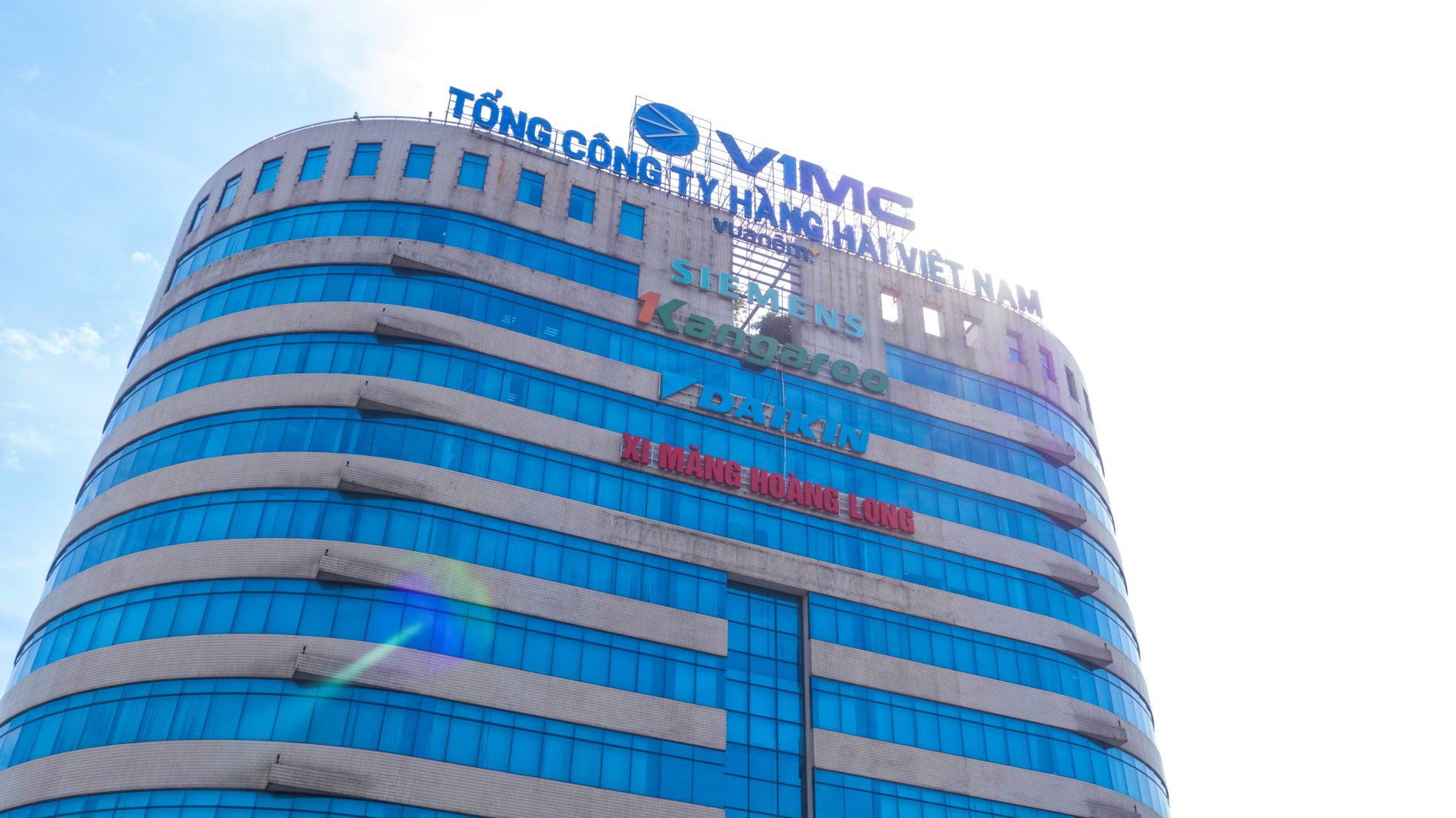The Vietnam Maritime Corporation has officially changed its corporate brand identity in alignment with its new trading name VIMC, marking a turning point of the corporation’s development since it became a joint stock company.
The beginning of a new chapter
Since August 18, 2020, Vietnam Martitime has officially operated as a joint stock company business after holding the first General Meeting of Shareholders. Previously, in 2018, the company was issued Decision No. 751 / QD-TTg by the Prime Minister on approving the equitization plan of the parent company – formerly Vietnam National Shipping Lines.
This achievement is the result of great efforts by the whole corporation after going through many difficulties and obstacles. At the same time, the corporation has also adopted a new brand identity based on its international trading name VIMC, replacing the old name of Vinalines.
The two tones of dark blue and light blue are used on the new logo of the Vietnam Maritime Coroporation to represent the sea and sky, expressing the characteristics of the corporation’s business lines and industries. VIMC – Vietnam Maritime Corporation is the new official trading name of the company, demonstrated with a neat, delicate text structure, symbolising its modernity and creativity, bringing a sense of safety and openness to customers. The stylised globe icon on the left was selected with the purpose of honouring its strong development and desire to reach the continent and the world. The new logo will accompany the corporation on its next journey and act as a locomotive driving the corporation’s subsidiaries.
Corresponding to its new trading name and brand identity, the corporation has also launched its official new website at http://vimc.co – the official page of the Vietnam Maritime Corporation.
Business philosophy and new visions
The new brand identity also shows the corporation’s determination to constantly innovate. Switching to the joint stock company model, the corporation has also set new standards in business for itself, ensuring stable development at times of many difficulties and challenges.
Reasserting its mission, the VIMC will constantly strive to make Vietnam a strategic destination on the global maritime map, contributing to more prosperity derived from the sea. With the aim of maintaining the leading position in providing a global package of logistics services solutions in Vietnam, the VIMC is committed to bringing customers outstanding values and expanding opportunities to access and trade. At the same time, it ensures a civilised working environment, and maximizes potential and development opportunities for each and every employee.
Accompanying the corporation are always its five core values: Discipline – Dedication – Creativity – Consensus – Integrity. These standards are set to guide all activities, plans and promote the philosophy of “exceeding expectations” of the corporation, delivering excellent results to customers, shareholders, partners, staff and society.
In order to achieve the set sustainable growth goals, the establishment of closed supply chains will also be one of the necessary directions that actively promotes all subsidiaries of the VIMC to develop in such a way that it optimises the most of its resources to meet future development requirements.
Sharing about this new journey, Le Anh Son, Chairman of VIMC’s Board of Directors, said: “Maritime is the one the world’s oldest industries that is also one of the most unstable and constantly fluctuating with the volatility of global economics and politics. We have changed dramatically in recent years and that change has helped the Vietnam Maritime Corporation to overcome the biggest wave in a quarter of a century since our establishment and development. Despite the fact that we have been doing well, competitors in the market have done even better. Changing the management model, logo and icon is necessary, but the most important thing is to change the mindset and approach towards customers. Only from there, the “new symbolic change will become the symbol of change”.












